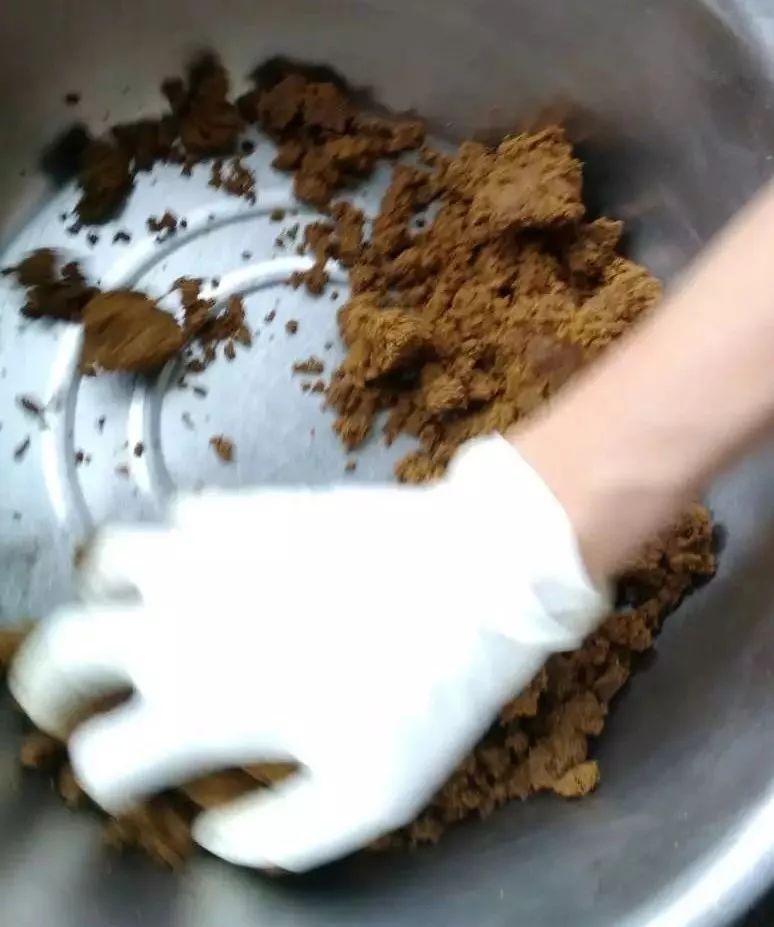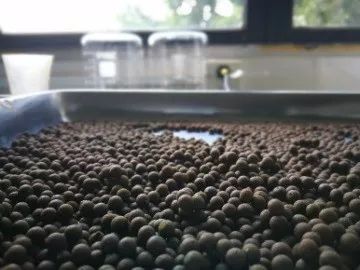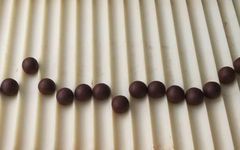
【Traditional Chinese Medicine App】 Online/Offline Reading of Ancient and Modern TCM Books >>>
As early as in the “Fifty-Two Disease Formulas”, there are detailed records of the names, prescriptions, and specifications of medicinal pills. The Song Dynasty’s “Taiping Huimin Heji Ju Fang” recorded a total of 788 formulas, among which 284 are medicinal pills, accounting for 36%. The “Shang Han Za Bing Lun” and “Jin Kui Yao Lue” already documented the use of honey, sugar, starch paste, and animal juice as binders for medicinal pills. Subsequently, various ancient formulas also recorded medicinal pills. This shows that the status of medicinal pills in the minds of TCM practitioners is very high.

Modern classifications of medicinal pills are based on the types of excipients, which include: water pills, honey pills, water-honey pills, concentrated pills, paste pills, and wax pills. Among these, water pills, honey pills, and paste pills are the most commonly used and are easier to prepare. Below, we will discuss the classification methods of various pills:

Water Pills: These are made from finely powdered Chinese herbs using water or other binders such as yellow wine, vinegar, diluted medicinal juice, or sugar solution. The characteristic is that they dissolve easily in the body after ingestion, leading to quick effects.
Honey Pills: These are made from finely powdered Chinese herbs using honey as a binder. The characteristic is that they can enhance the nourishing effects, moderate the medicinal properties, and mask unpleasant tastes and odors. Honey and water mixtures are referred to as “water-honey pills”.
Concentrated Pills: These are made from the clear paste or extract of Chinese herbs, combined with suitable excipients or other finely powdered herbs, using water, honey, or a mixture of honey and water as binders. This method was documented as early as the Jin Dynasty in Ge Hong’s “Zhou Hou Fang”.The characteristics are: small size, easy to take and absorb, and good preservation without mold growth. However, this method requires strict technical standards, making it less suitable for personal preparation.
Paste Pills: These are made from finely powdered Chinese herbs using rice flour paste or wheat flour paste as a binder. The characteristic is that they become hard after drying, release the medicine slowly, prolong the effect, and reduce gastrointestinal irritation.
Wax Pills: These are made from finely powdered Chinese herbs using beeswax as a binder. This method is more difficult and generally results in sustained-release formulations.

The above introduces the basic knowledge of medicinal pills. Next, I will take you through the process of making honey pills. Interested friends can try it out!
1 Ingredients and Powdering
Ingredients and Powdering

2 Mixing Honey
Mixing Honey
The ratio of honey needs to be determined based on the stickiness of the herbs; if the herbs are high in sugar and sticky, reduce the amount of honey; otherwise, increase it.

3 Refining Honey
Refining Honey
Refining honey means boiling it to remove impurities, destroy enzymes, kill bacteria, reduce moisture, and enhance stickiness. Refining honey is mainly judged by three levels, as follows:
Fresh Honey: This is when honey is heated to a boiling point of 105℃~115℃, and the foam is filtered out, with no significant color change. This is suitable for making pills from herbs that are high in starch, mucilage, sugars, and fats.
Medium Honey: This is when fresh honey is further heated to 116℃~118℃, the foam turns a light red color, and it is sticky to the touch but cannot be pulled into long white threads. This is suitable for making pills from herbs that have some stickiness or fiber.
Old Honey: This is when medium honey is heated to 119℃~122℃, the bubbles are reddish-brown and glossy, very sticky to the touch, and can be pulled into white threads. This is suitable for making pills from herbs that are high in fibrous or mineral content and have poor stickiness.
4 Mixing Herbs and Forming Clumps
Mixing Herbs and Forming Clumps
This means pouring the refined honey into the powdered herbs and kneading them into clumps.
When adding honey, be careful not to add it all at once! First, add a little more than half, knead, and if it’s not enough, continue adding honey until it forms clumps that do not fall apart when squeezed and do not stick to your hands.


5 Shaping and Cutting Pills
Shaping and Cutting Pills
This means dividing the kneaded clumps into small pieces, then using a pill press to shape them into strips, and finally using a pill cutter to cut them into small honey pills.
If you are making them at home and do not have machines, it is actually quite simple. First, roll the medicinal clump into an even strip by hand, then cut it into pieces at regular intervals, and finally roll the cut pieces into round shapes by hand. Remember to wrap them in plastic wrap after rolling to preserve them better.
Pressing Strips
 Cutting Pills6
Cutting Pills6 Packaging and Storage
Packaging and Storage
What do you think of the method for making honey pills? Doesn’t it seem similar to making tangyuan (glutinous rice balls)? Oh dear! Speaking of food, I have to run, or my stomach will protest.
★ The above content is for reference only; please seek medical attention at a regular hospital if you have any discomfort. ★

-
It is said that sweating is good for detoxification, but sweating from this area can be dangerous!
-
Surgeons cut flesh, internal medicine doctors poison, radiologists burn with electricity, and in the end, the patient dies while the cancer cells survive!
-
What do vegetarians look like? Fanatics? Fools?
-
Miraculous remedy | Ban Xia (Pinellia) and Ju Hong (tangerine peel) for grinding teeth.
-
Utilizing good classical formulas, starting with solving the “Five Difficulties”.
-
[Huang Wendong’s Medical Case] Epilepsy – Schizophrenia (1)
-
“Huangdi Neijing: Ling Shu” on dream disturbances.
-
“Huangdi Neijing: Ling Shu” on dream disturbances [Translation].
-
Heat and dampness cause hundreds of diseases: dampness is the greatest enemy of nourishing Yang in summer.
-
Zhu Liangchun: Effective formulas for treating insomnia.
-
[Huang Wendong’s Medical Case] Depression – Schizophrenia.
-
Formulas are not about quantity, but about proper adjustments.
-
Li Zhong Wan: A small formula can treat major diseases.
-
Three-ingredient herbal combinations in TCM (recommended for collection!!!)
-
“Huangdi Neijing: Ling Shu” on disease transmission.
-
“Huangdi Neijing: Ling Shu” on disease transmission [Translation].
-
The concept of sub-health is truly harmful!
-
It turns out that there are many types of spleen deficiency; quickly check to avoid taking the wrong medicine!
-
The first flower of summer, relies on it to clear heat and detoxify! Pair it with something else for double the effect!
-
Summer health strategies to eliminate dampness.
-
[Huang Wendong’s Medical Case] Accumulation of symptoms – Early liver cirrhosis.
-
Massage methods for female sexual dysfunction.
-
“Huangdi Neijing: Ling Shu” on the relationship between Yin and Yang.
-
“Huangdi Neijing: Ling Shu” on the relationship between Yin and Yang [Translation].
-
Must-read | Introduction to pulse diagnosis in “Shang Han Lun”.
-
How to treat shoulder periarthritis after air conditioning or rain exposure?
-
A needle therapy for breast hyperplasia.
-
Finding the secret to the efficacy of heavy doses of Chinese medicine (9 practical cases).
-
Huang Qi (Astragalus) has three clever uses for lowering blood pressure.
-
[Huang Wendong’s Medical Case] Liver Qi (6).
-
“Huangdi Neijing: Ling Shu” on the clarity and turbidity of Qi.
-
“Huangdi Neijing: Ling Shu” on the clarity and turbidity of Qi [Translation].
-
It is said that “eating radishes in winter and ginger in summer”; do you know how to eat ginger?
-
The most comprehensive high-definition animated diagrams of meridians, all acupoints included! [TCM App Collection]
-
Starting from “Huo Xiang Zheng Qi”, restoring the truth of TCM.
-
The wonderful uses of “Kong Yan Dan”.
-
To combat heart failure, TCM also has good prescriptions and strategies!
-
[Huang Wendong’s Medical Case] Liver Qi (5).
-
“Huangdi Neijing: Ling Shu” on blood coagulation.
-
“Huangdi Neijing: Ling Shu” on blood coagulation [Translation].
-
My mother is a TCM practitioner.
-
After four needles, a patient on the verge of shock miraculously recovers! A summary of TCM emergency methods.
-
Beauty and health experience cases (hair loss, freckles, etc.).
-
TCM Science | Baby, you were grown from the ground!
-
Understanding and analyzing wind diseases in “Jin Kui Yao Lue”.
-
Acupoint method for sobering up.
-
“Huangdi Neijing: Ling Shu” on the relationship between day and night.
-
“Huangdi Neijing: Ling Shu” on the relationship between day and night [Translation].
-
Supplementing the spleen is key to treating all diseases.
-
A clear and thorough recipe for liver-nourishing and vision-enhancing Goji and Chrysanthemum tea.
-
Halfway through summer, still not losing weight? You might be misjudging your type of obesity.
-
I study TCM, relying on the hard work and perseverance of “eating steamed buns with popsicles for meals”.
-
[Huang Wendong’s Medical Case] Liver Qi (4).
-
Waking up from dreams, feeling more tired than not sleeping—how to drive away annoying dreams!
-
“Huangdi Neijing: Ling Shu” on the five senses and their functions.
-
“Huangdi Neijing: Ling Shu” on the five senses and their functions [Translation].
-
Some old news about TCM consultation fees.
-
Healthy heart, TCM can create!
-
When thirsty, what does it indicate about the body?—Dryness | Thirst.
-
Discussing the miraculous achievements of ancient famous doctors.
-
[Huang Wendong’s Medical Case] Liver Qi (2).
-
[Huang Wendong’s Medical Case] Liver Qi (3).
-
“Huangdi Neijing: Ling Shu” on the five types of body fluids.
-
“Huangdi Neijing: Ling Shu” on the five types of body fluids [Translation].

Online reading of “Shang Han Lun”.
“The TCM Story of Grandfather and Grandson” is understandable for everyone.
Complete acupoint guide [Illustrated version].
Not sure how much the dosage is in ancient TCM texts? Just save this article!
The tricks of “substituting decoction” in pharmacies and hospitals!

